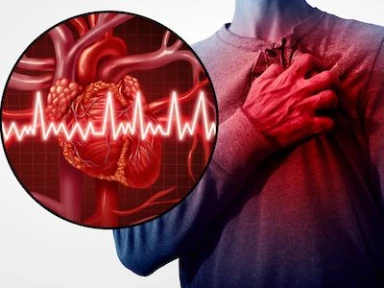{
event: "article_read",
name: `In hospital outcomes in young patients with AMI: Results from Gulf Coast`,
author: ``,
tags: `Atherothrombosis`,
publication_date: ``,
interaction_type: "content"
}
In hospital outcomes in young patients with AMI: Results from Gulf Coast
Risk factor profile and outcomes of young patients suffering their first acute myocardial infarction: Results from Gulf Coast
Findings from this first prospective cohort study evaluating Gulf-Arabs without prior cardiovascular disease presenting with first acute myocardial infarction (AMI) highlight important age-related care gaps in this patient population.
Main Takeaway
- This Gulf-Coast study in adults without established atherosclerotic cardiovascular disease (ASCVD) presenting with first AMI highlights significant differences in the clinical presentation, treatment patterns, and age-related care gaps between young ( 50 years of age) and older (>50 years of age) patients with first AMI.
- Young patients with first AMI had a high burden of modifiable ASCVD risk factors, and were more prone to be obese, smokers, and have a family history of premature coronary artery disease (CAD).
- This study noted a crucial treatment paradox: Older patients with AMI were less likely to receive potentially lifesaving interventions vs younger patients.
- Young patients had significantly lower odds of any major adverse cardiovascular events (MACE: adjusted odds ratio [aOR] = 0.53; P = 0.006) and had significantly lower odds of cumulative death up to 12-months post-discharge (aOR = 0.34; P <0.001).
Why This Matters
- The incidence of AMI in young adults is on the rise, yet the modifiable ASCVD risk factors accounting for the majority of AMI risk may remain undiagnosed or undertreated until the time of first AMI.
- Alarmingly high rates of cardiovascular risk factors were seen in the younger population in the Middle Eastern Gulf region; however, limited information is available regarding the risk profile of young patients with AMI in this region.
Study Design
- This study analyzed a subset of patients enrolled in the Gulf COAST registry (from January 2012 to January 2013):
- Key inclusion criteria: Individuals with no prior history of clinical ASCVD who presented with acute coronary syndrome and carried the diagnosis of AMI as their admission event
- Key exclusion criteria: Prior percutaneous coronary interventions, coronary artery bypass surgery, prior history of transient ischemic attack or stroke, renal dysfunction requiring dialysis, or patients presenting with concomitant stroke or severe bleeding, chronic obstructive pulmonary disease exacerbation, or pneumonia
- ASCVD risk factors: Modifiable (hypertension, dyslipidemia, diabetes, smoking, obesity and central adiposity) and non-modifiable risk factors (sex or family history of premature CAD) were obtained
- Study outcomes: Associations between age group and in-hospital MACE (re-infarction, heart failure, cardiogenic shock, cardiac arrest, stroke, and in-hospital death) and post-discharge mortality
Key Results
- 95.5% of matched patients used aspirin with ticagrelor or clopidogrel among the 31,290 propensity-matched pairs
- Of note, 59% of the young patients had 2 modifiable ASCVD risk factors.
- At the time of AMI, young patients were more likely to present with typical ischemic symptoms, and less signs of heart failure on presentation.
- Treatment patterns (guideline-proven therapies in young vs older patients): -blockers = 83.0% vs 74.4% (P <0.001); clopidogrel = 82.3% vs 76.0% (P = 0.009); and primary reperfusion therapy = 85.6% vs 75.6% (P = 0.003)
- Young patients had significantly lower odds of any MACE (aOR = 0.53 [95% CI: 0.34–0.83]; P = 0.006) vs older patients.
- Young patients had lower likelihood of cumulative death (including in-hospital death) at 12-month post-discharge.
- In-hospital death: aOR = 0.37 (95% CI: 0.16–0.86; P = 0.021)
- Cumulative death at 12 months: aOR = 0.34 (95% CI: 0.19-0.59; P <0.001)
Limitations
- This study only included patients presenting to the hospital with suspected acute coronary syndrome.
- The sensitivities in detecting elevated troponin levels may have varied across the different centers (data for the type of troponin assay used in each enrolling center was not collected).
- The success rate of primary reperfusion therapy was not documented.
- Alfaddagh A, Khraishah H, Rashed W, Sharma G, Blumenthal RS, Zubaid M. Clinical characteristics and outcomes of young adults with first myocardial infarction: Results from Gulf COAST. Int J Cardiol Heart Vasc. 2020;31:100680. doi: 10.1016/j.ijcha.2020.100680. PMID: 33304990.
Related articles
MAT-BH-2200187/v2/Jun 2023




.jpg/jcr:content/Athe%20thumb2%20(1).jpg)